Mosu Blossoms on Fillmore Street
Chef Sung Anh had no idea the trajectory of his career would change when Corey Lee sat down in front of his station at the sushi bar at the illustrious Urasawa in Beverly Hills.
Anh, who was born in Seoul and had already cooked at Water Grill in Los Angeles, had begun as a dishwasher at that kaiseki temple and worked his way through every position, including reservationist before becoming sous chef there.
He admired Lee, also Seoul-born, who had made his mark as the head chef of the French Laundry in Yountville before striking out on his own to open the acclaimed Benu in San Francisco.
“I joked to him that I wanted to be more than a sushi chef,” Anh recalls. “I wanted to wear a white chef’s coat.”
And he did. Thanks to Lee’s encouragement, Anh joined the French Laundry as chef de partie for two years before becoming chef de cuisine of Aziza in San Francisco. In late February, he took his biggest step yet — opening his own restaurant, Mosu in San Francisco’s Fillmore District.
The name is derived from “cosmos” (pronounced co-so-mo-su), vibrant Korean flowers that Anh fondly remembers from his childhood.
It’s a tiny (only 18 seats), very personal restaurant, as I discovered when I was invited in as a guest a couple weeks ago. It’s also by reservation-only. Which is good, because it’s unlikely passersby would come in otherwise, because the restaurant is behind a massive, unmarked wood door. You have no idea what is behind it just by looking at it. Anh explains that he designed it that way to play up the themes of simplicity, modesty, intimacy and mystery.
The front room is made up of only three tables, artfully sectioned off by a warm, wood divider punctuated with cutouts. There is only one set tasting menu per night of 12 to 14 courses for $195.
Although Anh has a fondness for searing spice thanks to his Korean heritage, you won’t find that evident here. The flavors are quite delicate with the slightest pop of pepperiness only here and there. The food is not overtly Korean, either, but influenced by several Asian cuisines and reinterpreted through his own prism.
The meal starts with what has become a signature bite: grilled burdock bark that looks for all the world like it’s been shaved off a tree. My Japanese-American husband joked that his Mom used to always throw out that part of the root. But Anh has wisely kept it, turned it into a cracker of sorts, whose underside gets a restrained smear of kombu, Korean peppercorns and house-cultured butter that tastes almost like cheese.
Next comes a cube of shrimp chiffon cake dolloped with onion cream and scallion threads. It’s eggy like Japanese tomago, but fluffier and with a sweet saline taste.
That’s followed by a trio of little dishes: river pod, a slightly gelatinous and slippery sea plant that tastes like it’s been lightly pickled; fried pike conger with the brightness of perilla and the fruity-tang of umeboshi; and smoky A5 Wagyu just kissed by the coals that gets sprinkled with a powder made from the Wagyu fat.
Black sesame tofu that almost looks like an ebony tomato is dressed with golden caviar, Hokaido sea urchin and Granny Smith apple, as well as dashi. The texture is soft, almost jello-like with the nuttiness of the tofu hitting you first, and the bright freshness of the apple last.
One of my favorite bites was the cured tuna belly. It is rolled with monkfish liver inside sheets of pickled kombu and daikon so that it resembles a nigiri roll. It may be only two bites, but they are quite rich. A ginger shoot garnish helps clear the palate.
Hairy crab comes two way: First, the meat is highlighted in a dish that takes its inspiration from Japanese chawanmushi, only instead of an egg custard, the creaminess comes from tender, creamy yuba strips. Salmon roe, okra, and gold leaf complete this lovely dish. Secondly, the hairy crab gets the gratin treatment. It’s combined with Monterey abalone, Japanese eggplant and sea grapes in a creamy, cheesy sauce. Sorrel adds a hit of citrus. The flavors made me think of a French bistro dish.
Two perfectly cooked bites of Central Valley squab, supple and medium-rare, got glazed with ginger alongside black trumpet mushrooms and Bing cherries.
Short rib is painted with pear puree, giving it an otherworldly look, and served with fermented Korean pepper sauce, chile pepper threads and goji berries. It’s meaty and faintly sweet with just the faintest hit of spiciness.
The sea moss soup reminded me of the seaweed soup my Mom used to make — only she never put foie gras in her version. Served with steamed rice, pickled ramps and preserved plums, it’s a course that takes comforting, home-style food to a slightly more luxurious level.
The prelude to dessert is a beautiful bowl of refreshing grapefruit and rambutan, cut almost like tiny flower petals, and served with ginger-lemongrass gelee and Thai basil.
Dessert is toasted basmati ice cream and an airy, white sesame cake with Grand Marnier syrup and gel. It’s nutty and toasty, and none too sweet.
The competition among new restaurants in the Bay Area these days is fierce, especially among tasting menu-only establishments. Here’s hoping that more people venture behind this unmarked door.
More Fillmore Street Restaurants to Check Out: State Bird Provisions
And: The Progress
And: SPQR
And: 1300 on Fillmore
And: Black Bark BBQ

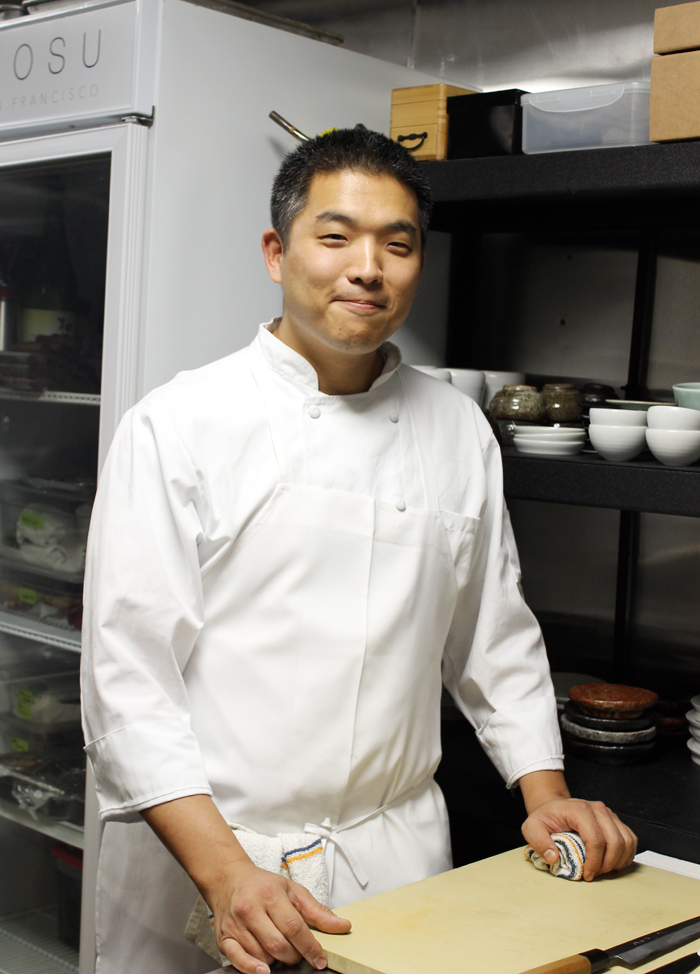
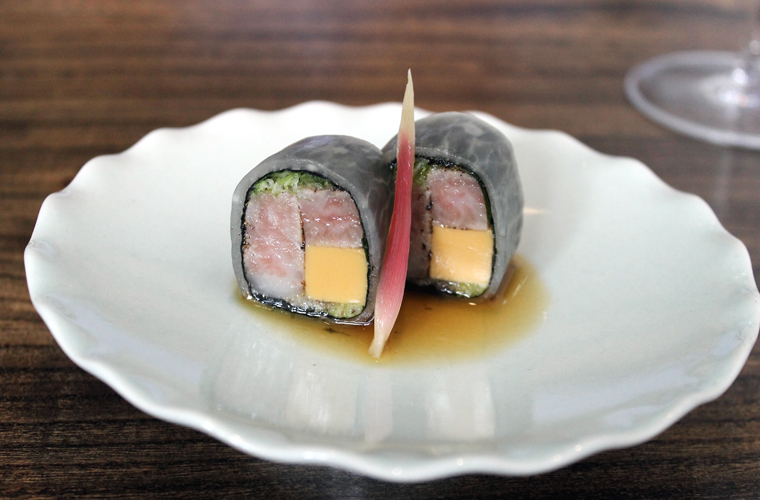

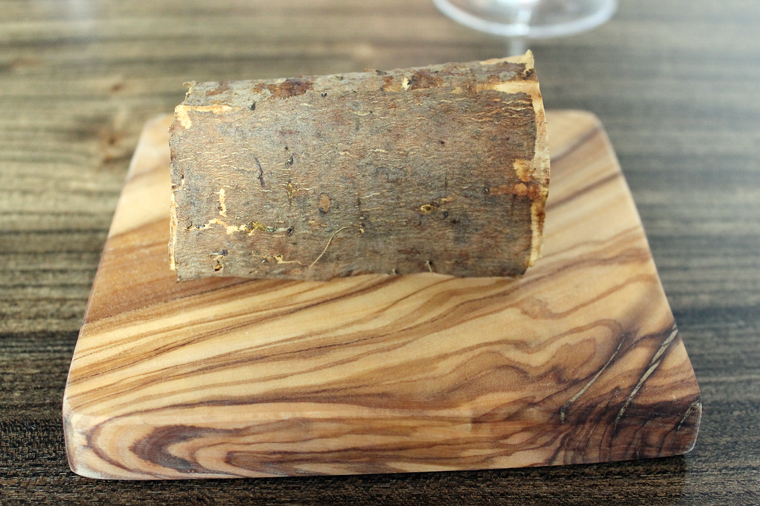
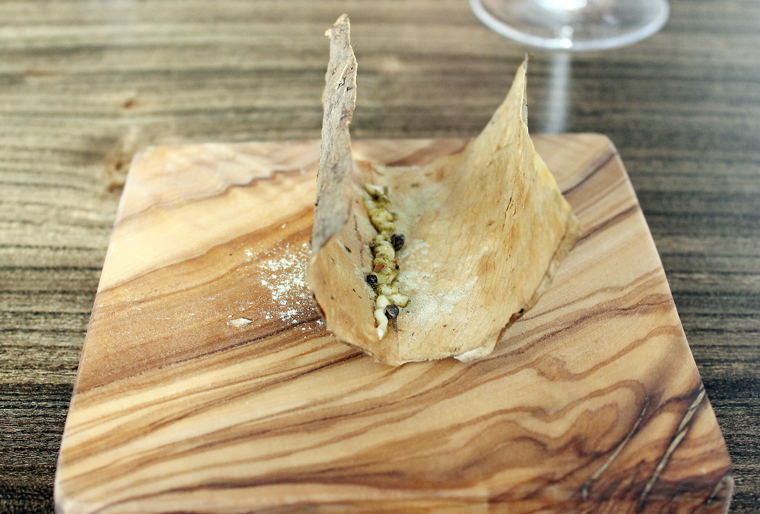
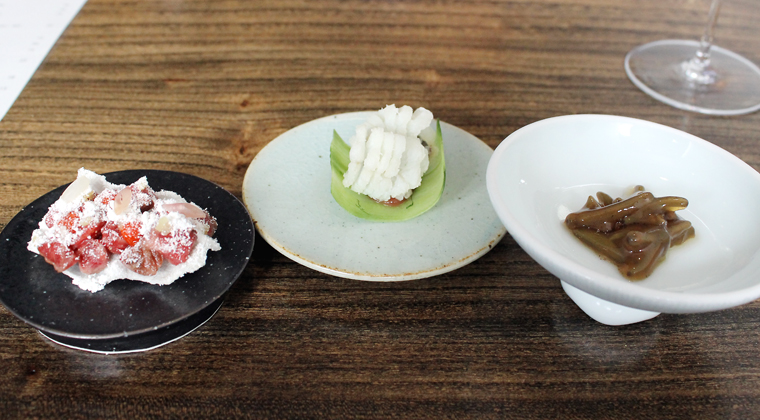
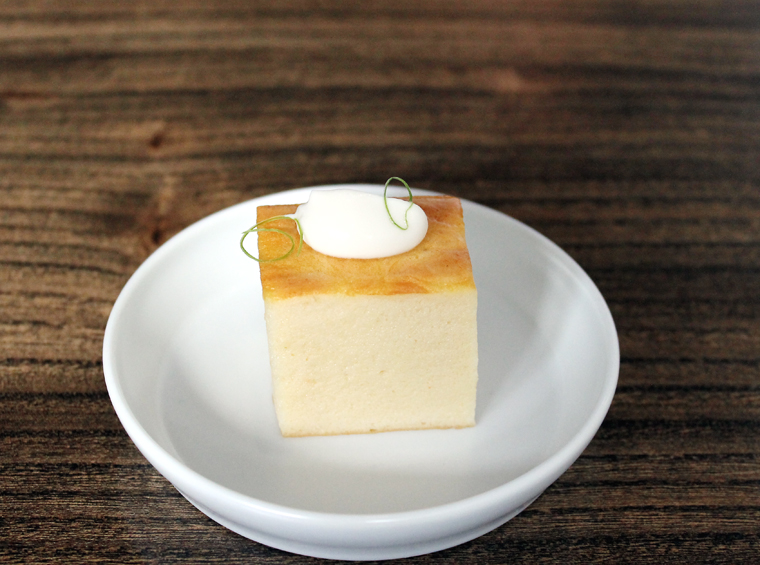
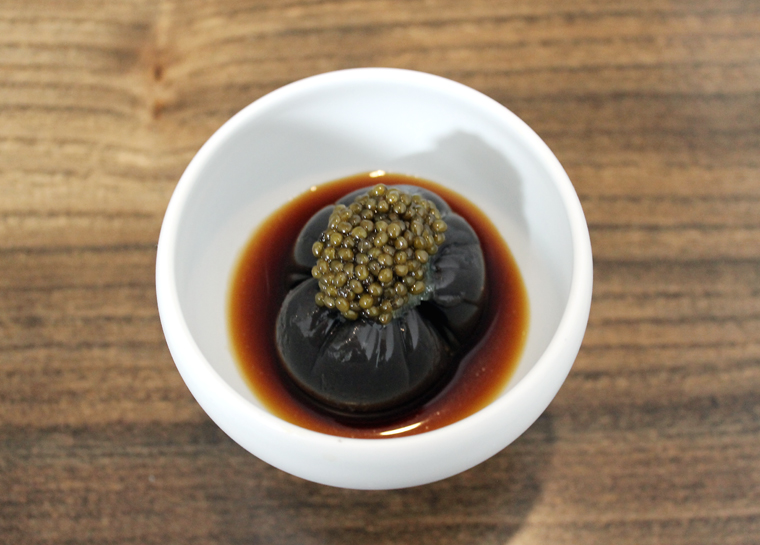
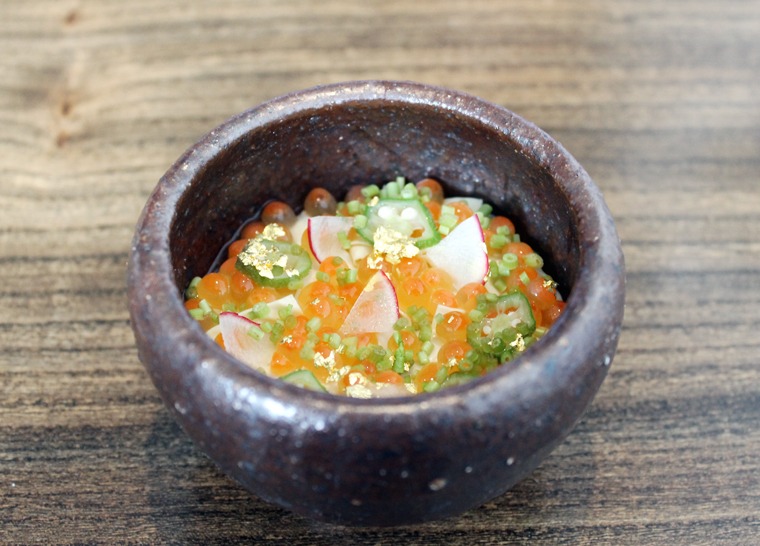
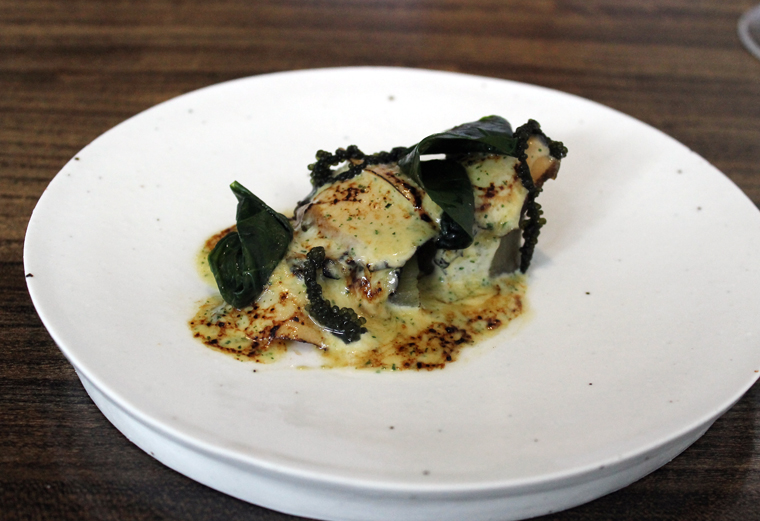
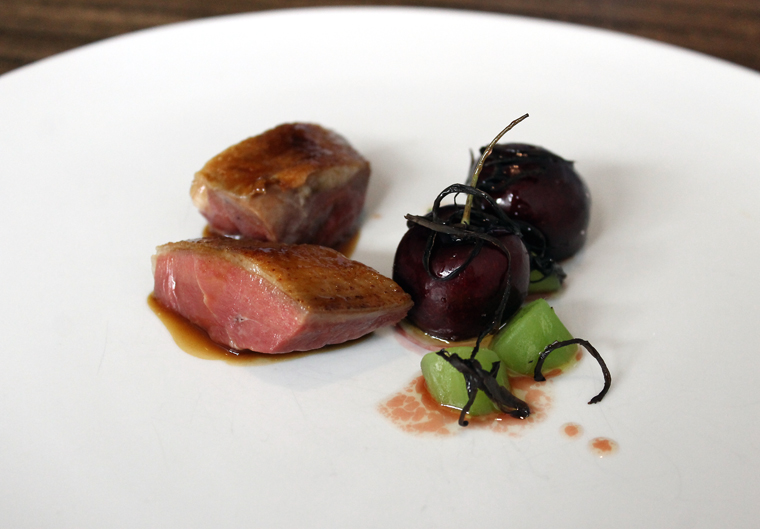
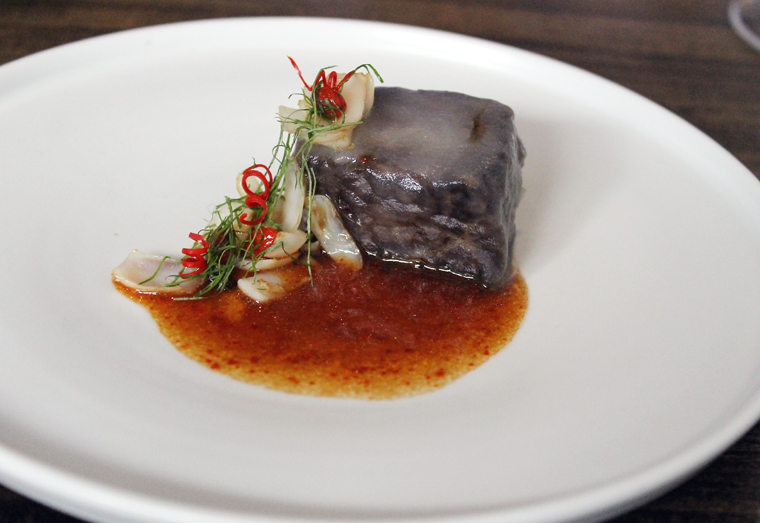
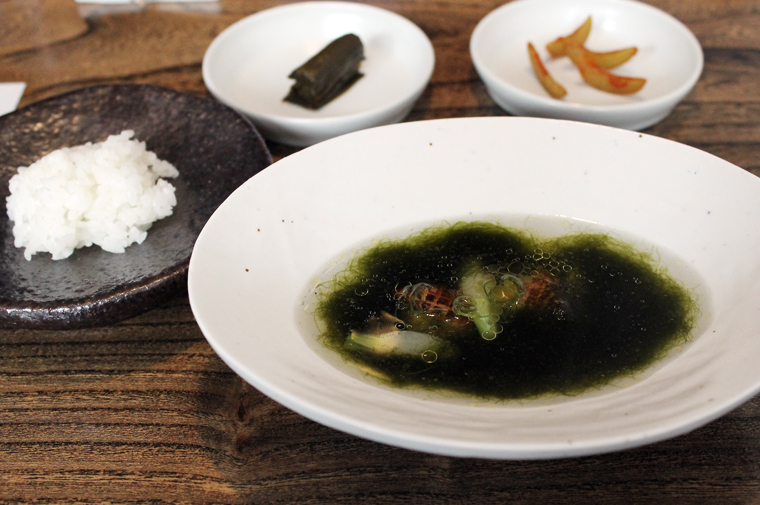
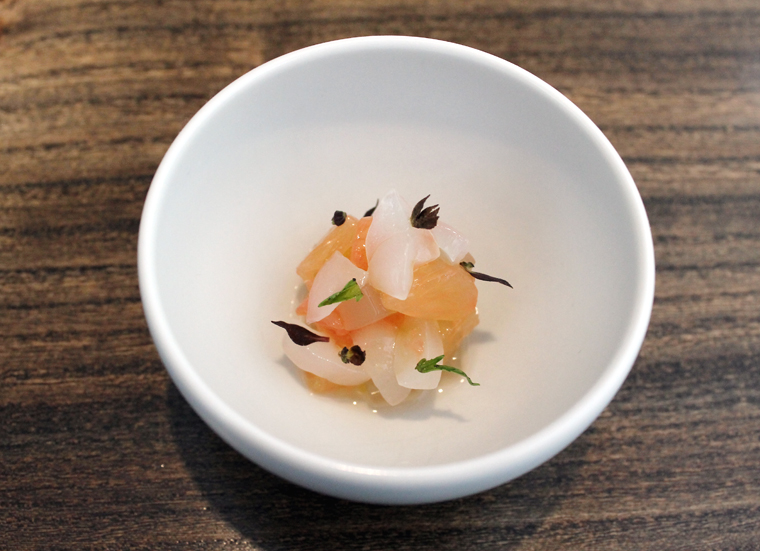
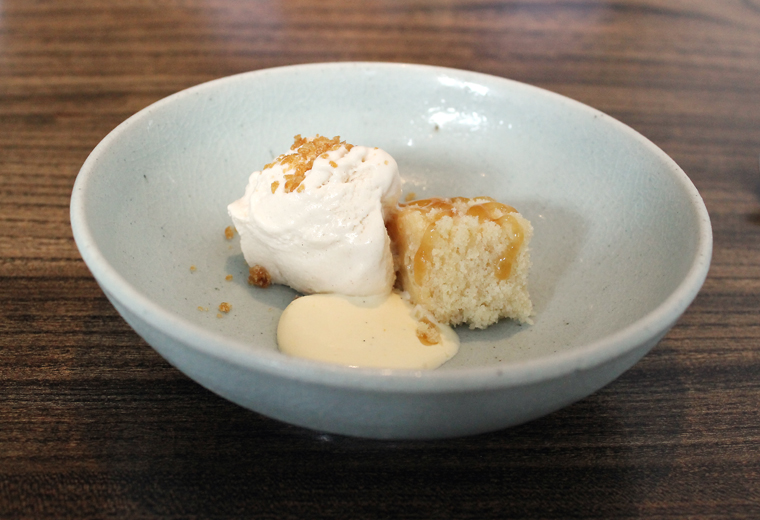
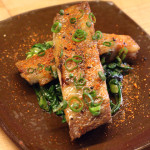
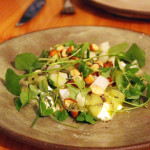
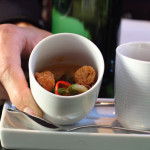
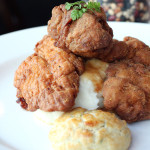
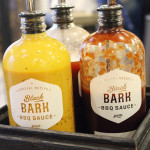
I’ve been meaning to try this place because interested in seeing an Asian-influenced tasting menu. Looking at your pics there are some reminders of Benu’s menu, which also has several Asian influences. Didn’t realize it was such a tiny space.
Love seeing this level of creativity in the menu.